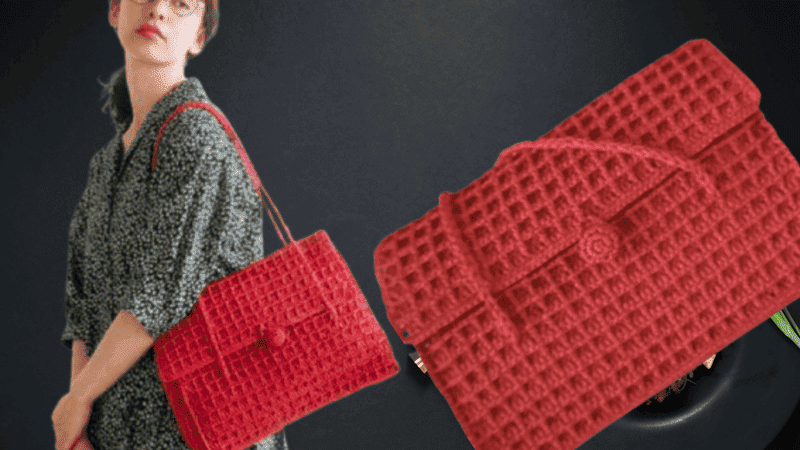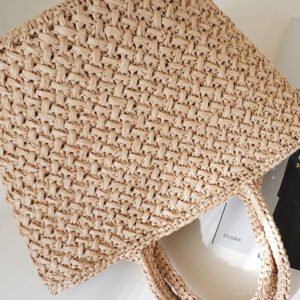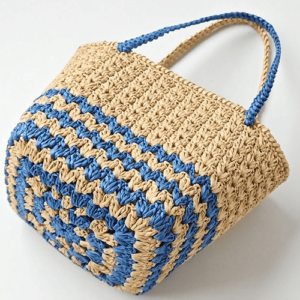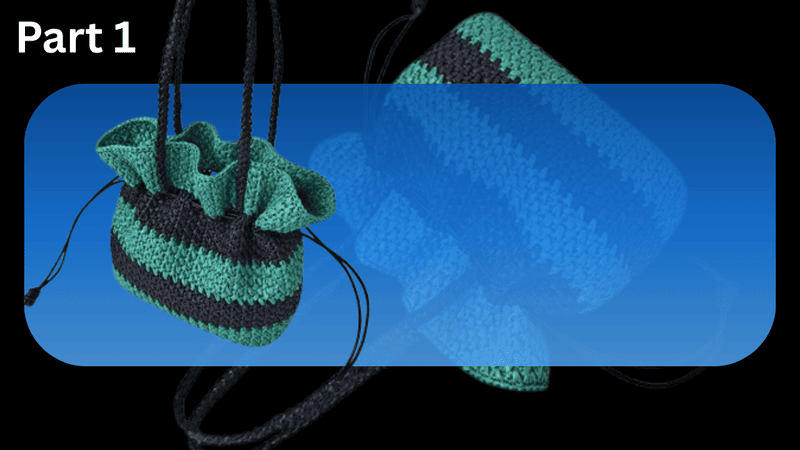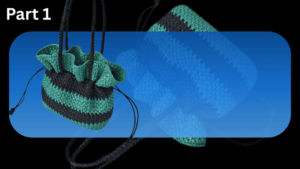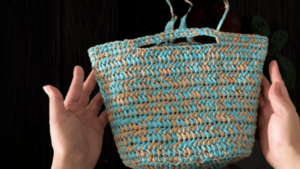Chainless Starting Double Crochet: Creating Clean Edges Without A Turning Chain
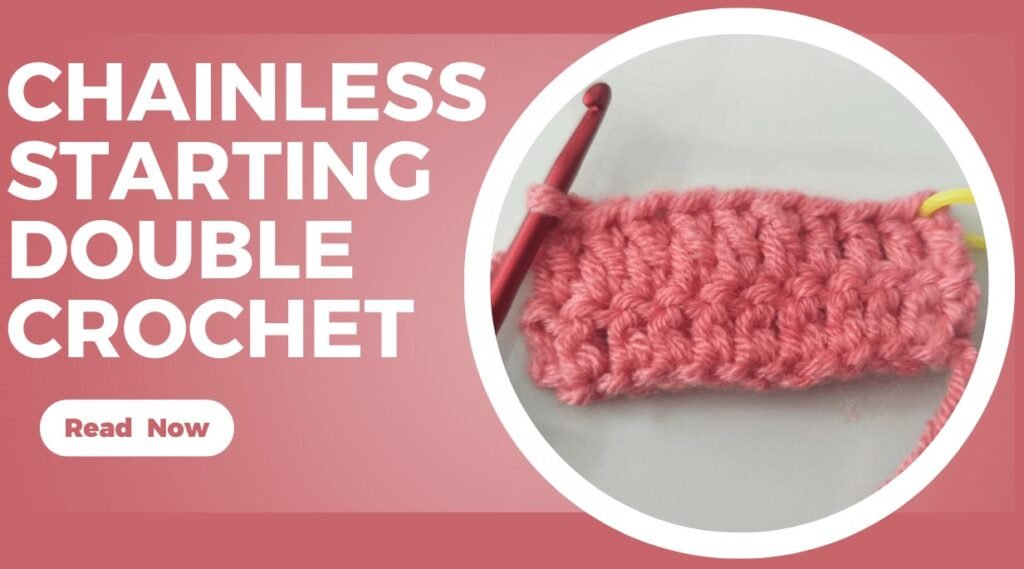
Table of Contents
What is a chainless starting double crochet?
Chainless starting couble crochet (CSDC):does at the beginning of a new row or round to replace the chain stitch -3 which is often used instead of the first double crochet.
It’s best suited for starting stitches where the height and width of the stitches are uniform.
Use CSDC to eliminate the gaps between the rows of stitches which makes them look more appealing.

When to use chainless starting double crochet?
The chainless starting double crochet (CSDC) may be used when commencing a new row of long stitches in a flipped work. It is particularly useful in the following situations:
✅ Cleaner edge – CSDC mimics a long stitch as a long stitch would stand making the edge neater while not creating a loose edge. It will not have the loose or tilted feeling of ‘chain stitch 3’ (traditional chain stitch 3 standing up is often loose and skewed, CSDC does).
✅ Seamless stitching or loop hook – in the case of CSDC for the starting point of a round, the first stitch can be placed in a way that it looks more seamless.
✅ Where neat edges are desired – useful for blankets, and scarves where the sides of these works must be neat.
Best selling products
-
Raffia Cross Pattern Basket Handbag Kit
$19.99 -
Hexagonal Bucket Bag Kit
$29.99 -
Raffia Handbag Kit
$29.99 -
Hammock Bag Kit
$29.99 -
Wheat Bucket Bag Kit
$19.99
Recommended articles
Want to learn double crochet , please click here: Double Crochet Stitches For Beginners
Learn more cute crochet pattern for lovers, please click here: https://www.youtube.com/@hookiyfs
Understand more crochet abbreviation, please click here:Crochet Abbreviation More Details | Table & Text Guide
What is the difference between chainless starting double crochet and double crochet?
I specially made a comparison table, which will be more intuitive and easier for everyone to understand and compare.
| Comparison Dimension | Traditional Double Crochet (DC) | Chainless Starting Double Crochet (CSDC) |
|---|---|---|
| Starting Method | Uses a turning chain (usually 3 chains) to start the stitch | Does not use a turning chain, instead starts directly with a special stitch method |
| Appearance | The starting chain often appears loose and gappy, with visible gaps at the beginning of the row | Looks like a complete double crochet, consistent with the rest of the row, without gaps |
| Stability | Less stable – the turning chain tends to be skewed or stretched | More stable – CSDC is firmer and stands upright |
| Edge Effect | Can cause uneven and wavy edges | More neat and straight edges, great for stitching, edging, and joining |
| Difficulty | Easy for beginners to master | Slightly more complicated, but easy to use once mastered |
| Applicable Scenarios | Used for basic patterns | Highly recommended for beautiful edges, seamless joining, or magic ring |
Picture of double crochet VS chainless starting double crochet
Traditional Double Crochet (DC)
Usually, when you start a DC row or round, the first instruction is to consit of ‘make three additional chain stitches (3ch).’
But in this case, the 3ch are significantly thinner than the DC stitch, which creates a gap between the 3ch and the first DC stitch.
DC is as below:
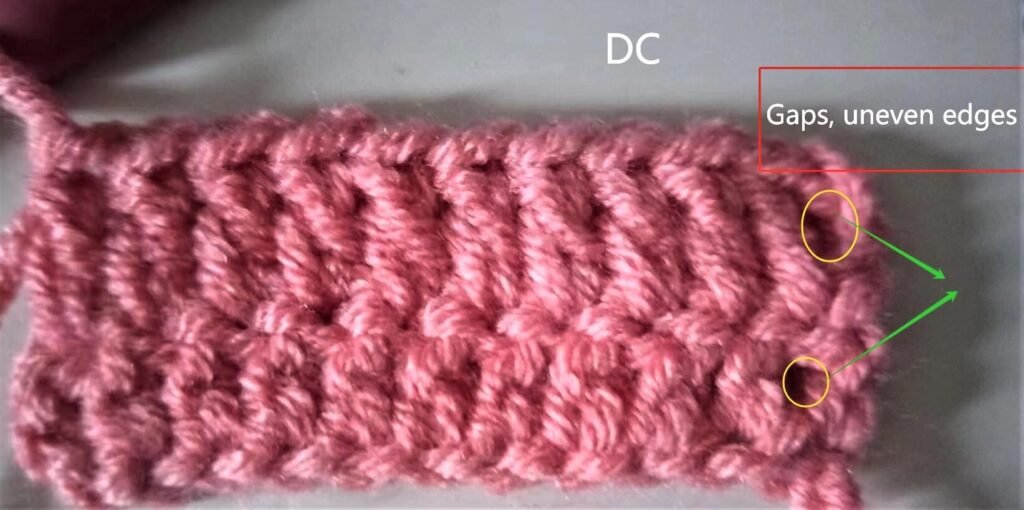
Chainless Starting Double Crochet (CSDC)
The “chainless double crochet” technique skips the initial 3 chains of each row and the entire row does not have a turning chain.
It utilizes a special stitch which resembles a complete double crochet and meshes seamlessly with the rest of the row. This method does not leave gaps and provides greater stability and height.
CSDC is as below:
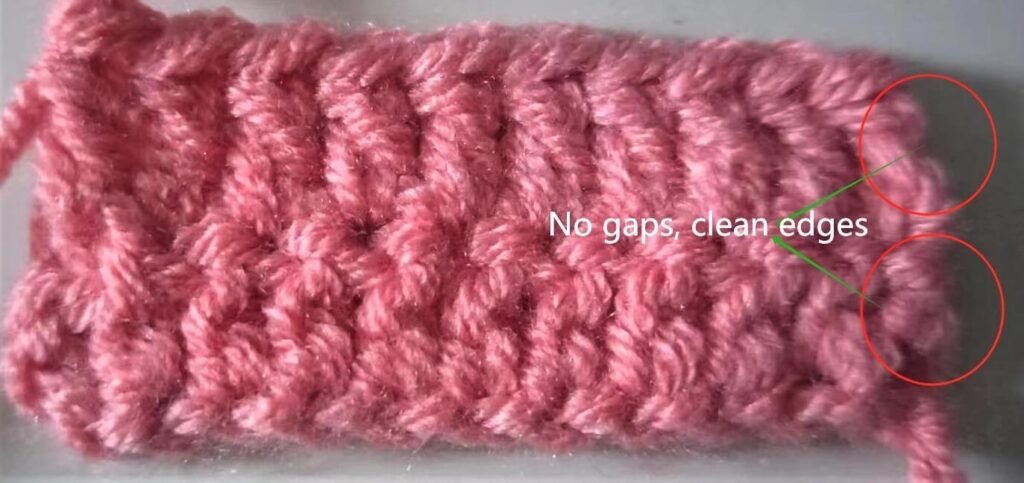
How do you do a chainless starting double crochet?
Usually, when starting a row of double crochet, you begin with a 3ch and consider that your first double crochet stitch. This doesn’t really resemble a double crochet and it is a little different which means it’s not the best approach.
So let us to learn CSDC now .
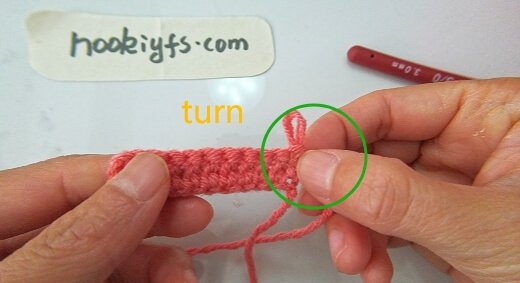
I’m not chaining 3ch , i’m just going to
turn over firstly
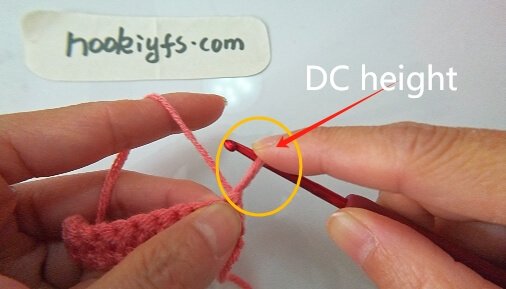
I’m going to draw this loop up as big as the stitch below it so this is the height of a double crochet.
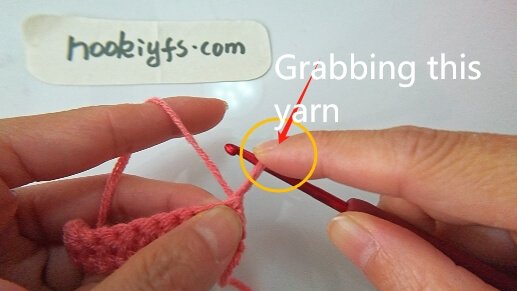
Grabbing this yarn i’m actually going to wrap my hook around.
This loop to create a yarn over you have to hold the loop in place if you let go it’ll come out.

You hold it with this finger and then you twist your hook around like that to create a yarn over.
i can adjust the size a little bit with this tensioning finger just as i normally would for a stitch.
Remember i said if you let go the whole yarn comes out so don’t let go.
We’re going to do the yarn over by holding this loop in place wrapping our hook around the stitch around the loop so that’s our yarn over

Insert your hook into the first stitch.
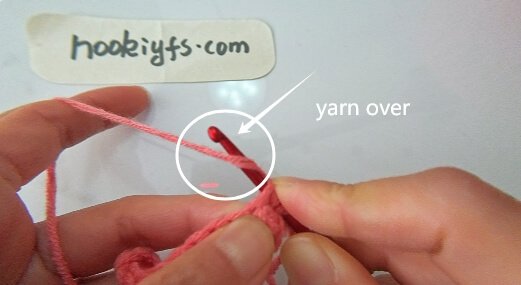
yarn over,let’s finish it just like a double
crochet yarn over-Wrap the yarn over your hook from back to front.
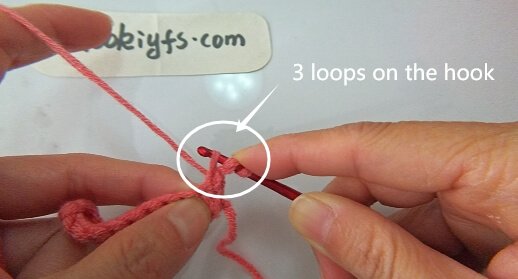
Pull up a loop (you now have 3 loops on your hook).
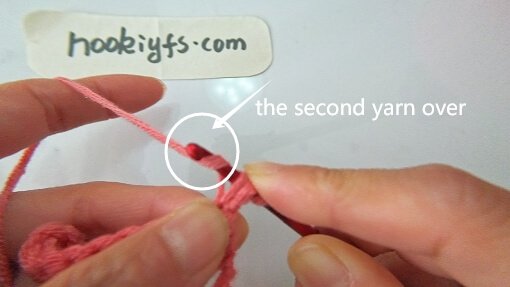
Yarn over (YO): Wrap the yarn over your hook from back to front.
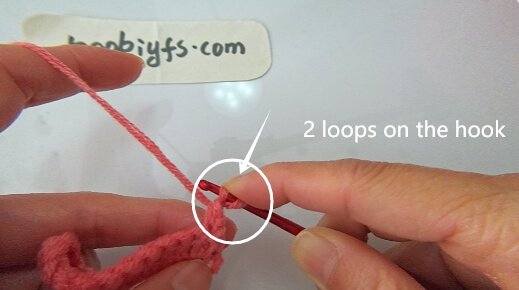
Pull through the first two loops (now you have 2 loops on your hook).
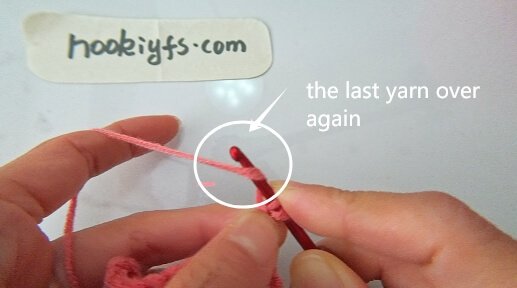
Yarn over (YO): Wrap the yarn over your hook from back to front.
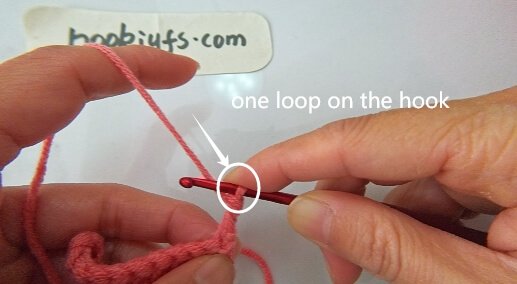
Pull through the last two loops
you should have 1 loop left on your hook). this CSDC is finished.
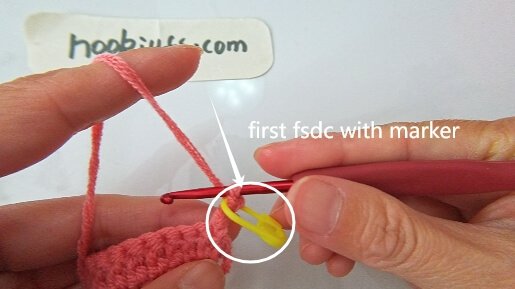
For beginners, it is best to button the marking button after completing the first stitch.
Tips:
When pulling up the loop at the beginning of the stitch, you need to get the tension right. This process is going to take a little bit of practice .
Get it right and everything will go smoothly, but if you get it wrong, so resist and if it’s too long, puffy and too loose or if it’s too tight, your stitch will be very tight, so get down to practicing.
Frequently Asked Questions (FAQs)
Is CSDC suitable for beginners?
Yes! In cases where learners know how to execute a double crochet, CSDC will only require a little additional effort. The edges will be smoother when we knit side projects, which is why learning CSDC will be helpful even if it is a bit challenging to start.
Why use CSDC instead of 3 chain?
Works containing CSDC appear to have better smoothness and vertical alignment. The cleanliness of finishing with CSDC makes it far superior to the triple chain. Clean, neat, and professional work always has no gaps or loose stitching, and that’s how CSDC helps us achieve from the beginning.
Can we use CSDC in a stitch?
Absolutely. CSDC is a good option to begin when a new stitch is to be worked because its seams are more smooth with CSDC.
Does CSDC count as the first stitch?
Of course. CSDC counts as the starting point of the row or round which as a double crochet means the first stitch. After knitting, ëmmer the basic rule is, place the marker button.
Can we use CSDC in lace or net patterns?
In some lace or openwork designs where the chain stitch is part of the pattern, which as outlined is not advisable to use CSDC directly.
Why does our CSDC appear to be too high or too shallow?
This is typically a problem of the height of the loop. If our initial loop is too high or too tight, the stitches will appear uneven. This issue can be remedied by trying to adjust the loop to the height of a standard double crochet and keeping a relaxed grip with even tension throughout the stitching process.
Can any yarn weight be used with CSDC?
Certainly! CSDC can be applied regardless of whether we are dealing with lace weight or thick yarn. The only concern is how far one pulls the first loop in relation to the size of the yarn and hook being used.
Does CSDC change the number of stitches?
Not at all. It takes the place of the chain stitch and uses a long crochet as one. Hence, our total stitches will not change. For those who are new to stitch markers, please use one to signify when the first CSDC is completed.
Can CSDC be applied in foundation rows?
No, the CSDC goes after the foundation chain. It is a substitute for the first chain in row after the row, so it does not serve any purpose in the foundation row.
Why is our CSDC twisting or looking off?
This is a typical issue for when we start learning. As is the case with most beginner issues, it is associated with the amount of tension and the angle of the yarn. Try going slower and maintaining a constant tension during the pull – it will smooth out over time.
Is it possible for us to apply the CSDC in granny squares?
Absolutely! The CSDC works very well with granny squares. It minimizes the common three chain stitch gap which is far more visually appealing than the standard three-stitch chain and causes a lot of unevenness in the rounds.

